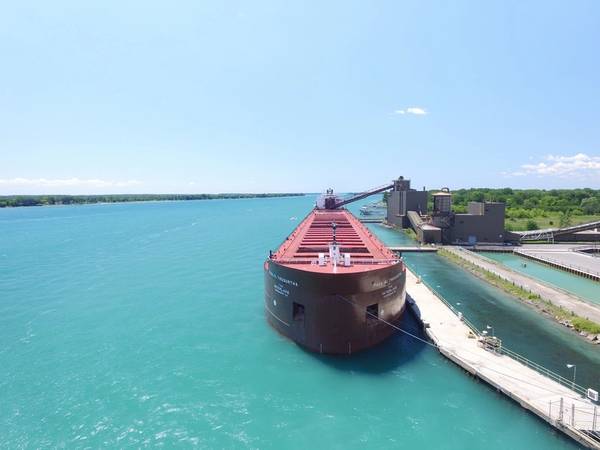
Iron ore, dry bulk cargo and general cargo shipments remain strong on the St. Lawrence Seaway, with overall tonnage up 18 percent over last year.
The St. Lawrence Seaway Management Corporation reports that cargo shipments from March 20 through July 31 totaled more than 16 million metric tons – up 2.5 million metric tons over the same period in 2016.
“We continue to see demand for raw materials that are needed for construction and in the manufacturing and automotive industries,” said Bruce Burrows, President of the Chamber of Marine Commerce. Iron ore shipments have topped 3.7 million metric tons so far this year, that’s up nearly 68.5 percent from a year ago. “The jump in iron ore shipments is fueled primarily by a surge in exports going from Minnesota to Japan and China,” Burrows added.
Iron ore shipments through the Port of Duluth have shown steady increases this season. “It’s encouraging to have all six mines on Minnesota’s Iron Range operating once again,” said Adele Yorde, Duluth Seaway Port Authority public relations director. “Year-to-date tonnage for pellets was running a full 16 percent ahead of last year (at the end of June) and outpacing the five-year average by the same spread. Not only are domestic deliveries up on the Lower Lakes, overseas shipments have risen exponentially as well. More than 35 percent of the pellets moved through our port through June have been loaded onto Canadian carriers and shipped via the Seaway to Quebec for transshipment overseas.”
Meanwhile, general cargo shipments (including specialty steel and project cargo) through the Seaway are up more than 35 percent, while dry bulk tonnage has increased 15.5 percent. Salt shipments are 42 percent above 2016 totals.
Dave Gutheil, VP, Maritime Operations, at the Port of Cleveland added: “International tonnage at our port is up 10 percent through July versus the same period in 2016. Project cargo has more than doubled and containers have increased slightly.”
At the Port of Green Bay, overall tonnage remains up despite a drop in shipping tonnage in July compared to a year ago. “Even with the decline in July, we are experiencing a solid shipping season so far, led by an increase of 49 percent in coal imports and a 95 percent jump in imports of domestic petroleum products,” said Dean Haen, director for the Port of Green Bay. “It’s not unusual to see month-to-month variances throughout the season.” Overall for the Port of Green Bay, shipping reached 810,000 tons through the end of July, a two percent increase over last year.



